In road construction projects, stone is an important building material and is widely used. In the project, commonly used stone materials include granite, gneiss, diorite, sandstone, limestone and so on. In general, natural rock must be processed to meet the requirements of the project. According to the geometrical dimensions of stone products, the stone products used can be divided into block stones for direct paving, various specifications of stone and crushed and processed (artificial sand) and stone powder.
Ⅰ. Classification of various stones
Schist stone
The schist stone is a non-specified stone directly obtained by blasting. The size of one direction is generally 30-40 cm, the thickness of the middle part is not less than 15 cm, the volume is not less than 0.01 cubic meter, and the mass is about 30 kg or more. The stone is often used for masonry slopes, retaining walls and bridge slope protection. The total compressive strength of the slab used for the main body of the finished project is not less than 30 MPa, and its ultimate compressive strength is not less than 20 MPa for the auxiliary completion project.
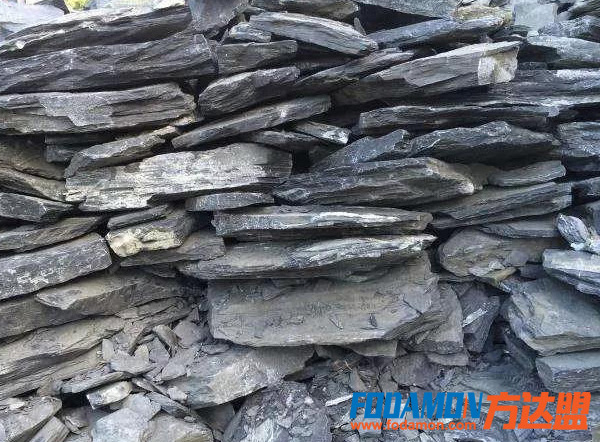
Block stone
The block stone is obtained by blasting or relying on manual direct mining, and is often used for the foundation of masonry bridges. The shape of the block stone is roughly square, without sharp corners. There are two large parallel faces, the corners can be processed, the thickness is not less than 20cm, the width is 1.5-2.0 times of the thickness, and the length is 1.5-3.0 times of the thickness.
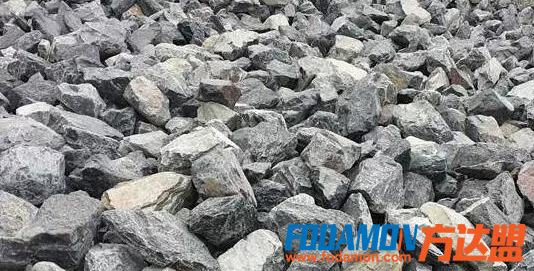
Square stone
The relatively neat block stone is slightly trimmed, and its shape is roughly square, the thickness is not less than 20mm, the width is 1.5-2.0 times of the thickness, and the length is 1.5-4.0 times of the thickness.

Cone block stone
The tapered block stone is processed from a piece of stone into a stone having a flat bottom and shaped like a corner pliers. According to its height, it is divided into three levels of 14cm, 16cm and 18cm. The bottom plane area is not less than 100cm2. The top size is not limited, but it cannot be formed into a diagonal clamp type, and the ratio of high bottom area should not be too large. Conical block stones are mainly used to lay the base layer of the road pavement, and generally use various rocks with an ultimate resistance strength of not less than 30Mpa.
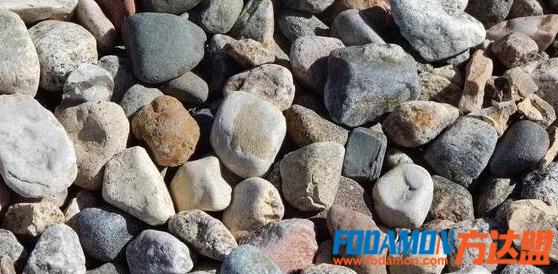
Fist stone
Fist stone is a kind of hard stone which is similar to the shape of a prismatic body or a truncator body (fist shape). The top surface should have four sides to form a polygonal outline. Bottom and top of the stone should be basically parallel, the bottom should be obtuse but not pointed, the bottom should be projected in the top outline, the side should not hinder the paving of sharp prominence. Boxing stone is mainly used for road pavement, bridge and culvert and other reinforcement projects. According to height, it can be divided into four grades: short, medium, high and super high.
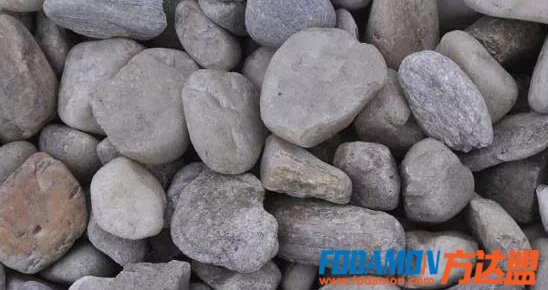
Dressed stone
Dressed stone is generally a hexahedron, and its size and strength should conform to the design rules and be divided into two types. The surface irregularities are not more than 10 mm and 5 mm, respectively. The stone is mainly used for the arch ring of the arch bridge.
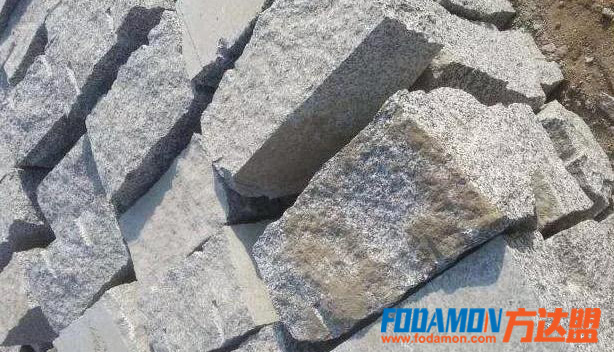
The particle size of the stone in the mining industry is usually between 5mm and 31.5mm, as below:
a. 5-1 stone represents 5-10 mm gravel.
b. 1-2 stones represent 10-20 mm gravel.
c. 1-3 stones represent 16-31.5mm gravel.
d. 2-4 stones represent two or four points, the international standard is 1/4-1/2 inches, representing 10-15 mm gravel;
e. 4-6 stones represent four or six points, the international standard is 1/2-3/4 inches, representing 15-20 mm gravel.
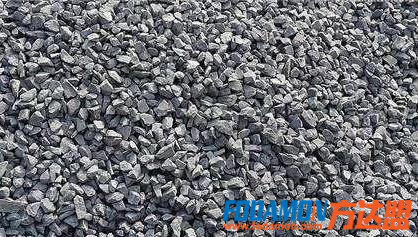
Because the size of the gravel is not uniform, it needs a range when using the vibrating screen for screening and grading. This 1-2, 1-3, 2-4 refers to this range, the unit is centimeters, such as 1-2 is this The small diameter of the crushed stone is 1 cm, and the large diameter is 2 cm. Of course, this range refers to the vast majority and does not represent all.
Ⅱ. Classification of Sands
Refer to the standard of construction sand in China: sand refers to rock fragments with a particle size of less than 5 mm and formed and accumulated in natural conditions such as lakes, seas, rivers and mountains. It can also be processed by mining machinery with a particle size of less than 4.75. Mm of construction particles.
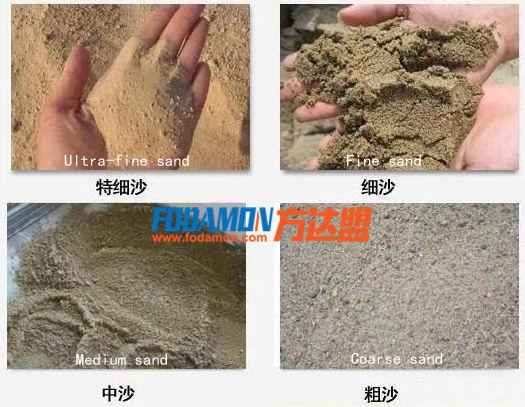
The thickness of the sand is divided into 4 levels according to the fineness modulus:
a. Coarse sand: Fineness modulus is 3.7-3.1, average particle size is more than 0.5mm.
b. Medium sand: Fineness modulus is 3.0-2.3, average particle size is 0.5-0.35 mm.
c. Fine sand: Fineness modulus is 2.2-1.6, average particle size is 0.35-0.25 mm.
d. Ultra-fine sand: fineness modulus is 1.5-0.7, average particle size is less than 0.25 mm.
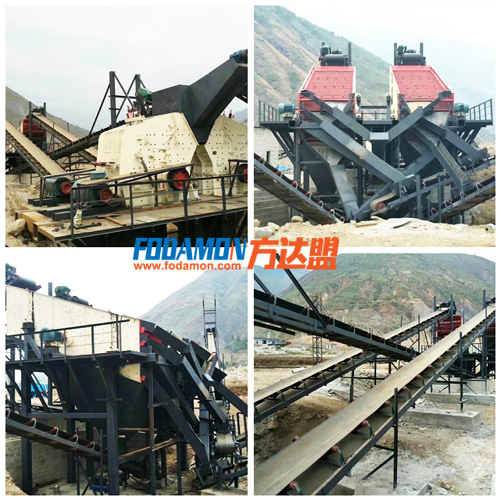
Highway engineering uses massive stones, which are usually mined and processed from natural rocks (as well as natural pebbles). Stone should be uniform, non-weathering, crack-free hard rock for anisotropic and cleavage rocks, should correctly grasp its anisotropy and cleavage, for highway engineering block stone mining, processing and use are very important. In addition to size and size specifications, various industries also have corresponding requirements for needle-like particles, mud content, mud content, stone powder content and firmness of sand and stone materials. Therefore, Fodamon engineers suggest that it is necessary to specify requirements in advance when configuring production lines in order to avoid affecting the quality and marketing of finished materials.
